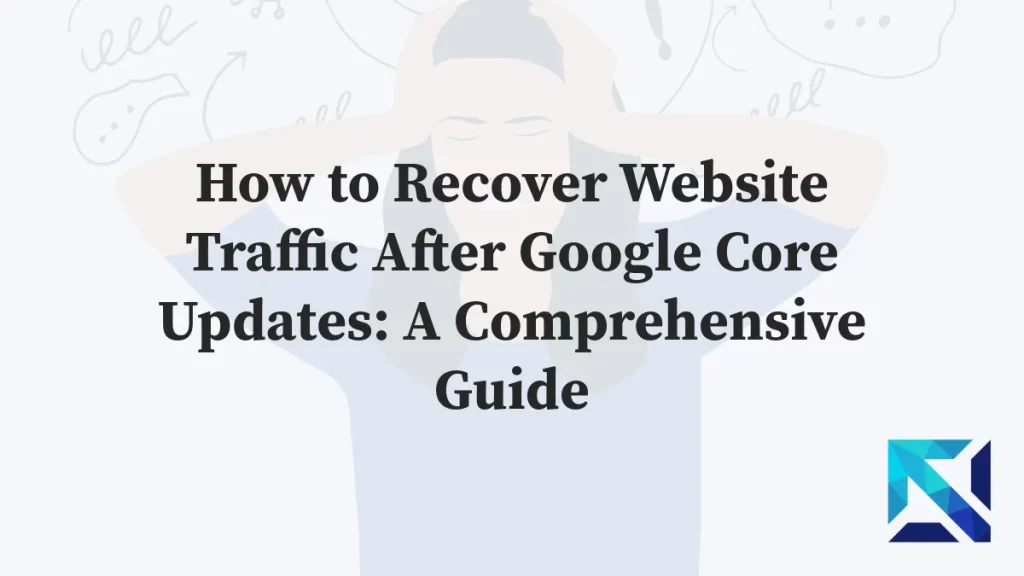In the digital age, businesses are no longer confined to their local markets.
The internet has opened up a world of opportunities, allowing companies to reach customers across the globe.
But to truly tap into these international markets, businesses need to speak the language of their customers.
This is where multilingual SEO and content marketing come into play.

Multilingual SEO is the practice of optimizing your website for search engines in multiple languages.
It’s about ensuring that your content resonates with diverse audiences and ranks well in search engines across different languages.
This is not just about translation.
It’s about understanding cultural nuances, local customs, and search behaviors in different regions.
It’s about creating a global content strategy that is scalable and effective.
In this comprehensive guide, we will delve into the world of multilingual SEO and content marketing.
We will explore the best practices, advanced techniques, and actionable insights that can help you conquer global markets.
Whether you are a digital marketer, an SEO specialist, a content strategist, or a business owner looking to expand your international presence, this guide is for you.
Let’s embark on this journey to mastering multilingual SEO and content marketing.
The Imperative of Multilingual SEO in Global Market Penetration
In today’s interconnected world, businesses are increasingly looking beyond their local markets.
They are seeking to tap into the vast potential of global markets.
However, penetrating these markets requires more than just a good product or service.
It requires a deep understanding of the local culture, language, and search behaviors.
This is where multilingual SEO comes into play.
Understanding Multilingual SEO and Its Impact on Your Business
Multilingual SEO is not just about translating your website into different languages.
It’s about optimizing your website for search engines in multiple languages.
This means ensuring that your content is easily discoverable and understandable by users in different regions.
It also means adapting your SEO strategies to the specific search behaviors and preferences of these users.
The Difference Between Translation and Localization
When it comes to multilingual content marketing, there is a crucial distinction between translation and localization.
Translation is the process of converting text from one language to another.
Localization, on the other hand, involves adapting your content to the cultural context and customs of the target market.
This includes not just language, but also images, colors, symbols, and other elements that resonate with the local audience.
Cultural Nuances and Local Customs in Content Marketing
Understanding cultural nuances and local customs is key to creating content that resonates with your target audience.
This means going beyond literal translations and considering the cultural context in which your content will be consumed.
For instance, certain colors or symbols may have different connotations in different cultures.
By taking these factors into account, you can create content that truly speaks to your international audience.
Crafting a Scalable Multilingual Content Marketing Plan
Creating a scalable multilingual content marketing plan is a complex task.
It requires careful planning, coordination, and execution.

The first step is to identify your target markets and understand their language preferences and search behaviors.
This will help you tailor your content and SEO strategies to these markets.
Conducting Localized Keyword Research Effectively
Localized keyword research is a critical component of multilingual SEO.
It involves identifying the keywords that your target audience in a specific region is likely to use when searching for your products or services.
This is not as simple as translating your existing keywords into the target language.
- Cultural differences, local slang, and regional variations in language can all affect how people search for information online.
Strategies for Multilingual Content Creation and Distribution
Once you have identified your target keywords, the next step is to create content that is optimized for these keywords.
This involves not just translation, but also localization.
Your content should be culturally relevant and resonate with your target audience.
It should also be distributed through the channels that your audience uses most frequently.
The Role of Quality Translation and Localization Services
Quality translation and localization services play a crucial role in multilingual SEO.
They ensure that your content is not only linguistically accurate but also culturally appropriate.
Automated translation tools may not be able to capture these nuances.
Therefore, it’s advisable to work with professional translators and localization experts who understand the cultural context of your target markets.
Technical Aspects of Multilingual SEO
Multilingual SEO is not just about content and keywords.
It also involves several technical aspects that can significantly impact your site’s visibility in different regions.
These include URL structures, domain strategies, hreflang tags, and on-page SEO elements.
Understanding and implementing these technical aspects correctly is crucial for the success of your multilingual SEO strategy.
URL Structures and Domain Strategies for Multilingual Websites
The structure of your URLs and the domain strategy you choose can affect how search engines index and rank your site in different languages.
There are several options to consider, each with its own pros and cons.
- You can use country code top-level domains (ccTLDs), subdomains, subdirectories, or parameters.
The best choice depends on your specific needs and resources.
The Significance of Hreflang Tags in Language and Regional Targeting
Hreflang tags are a critical technical element in multilingual SEO.
They tell search engines which language you are using on a specific page, helping them serve the right content to the right users.
- For example, you can use the hreflang tag to indicate that a page is intended for English speakers in the US, Spanish speakers in Spain, or French speakers in Canada.
Incorrect use of hreflang tags can lead to indexing issues and poor user experience, so it’s important to get it right.
On-Page SEO Elements for Multiple Languages
On-page SEO elements, such as titles, meta descriptions, and headers, also need to be optimized for multiple languages.
These elements not only help search engines understand the content of your pages, but also influence click-through rates from search results.
- Remember to include your target keywords in these elements, and ensure that they are accurately translated and localized for each language version of your site.
Just like with your content, avoid direct translations and consider cultural nuances and local search behaviors.
Building a Diverse Link Profile for Multilingual SEO
Link building is a critical component of any SEO strategy, and multilingual SEO is no exception.
A diverse link profile can significantly boost your site’s visibility and authority in different regions.
However, building a diverse link profile for multilingual SEO requires a strategic and targeted approach.
The Role of Backlinks in Multilingual SEO
Backlinks, or inbound links, are links from other websites that point to your site.
They are a key ranking factor in SEO, signaling to search engines that your content is valuable and trustworthy.
In the context of multilingual SEO, backlinks from high-quality, relevant websites in your target languages can significantly improve your site’s visibility and credibility in those regions.
However, acquiring such backlinks can be challenging and requires a well-planned strategy.
Strategies for Acquiring Quality Backlinks in Different Languages
There are several strategies you can use to acquire quality backlinks in different languages.
One effective approach is to create high-quality, valuable content that naturally attracts links from other websites.
You can also reach out to relevant websites in your target languages and propose a link exchange or guest posting opportunity.
Another strategy is to leverage local influencers and bloggers in your target regions, who can help promote your content and generate backlinks.
Remember, the quality of your backlinks is more important than quantity, so focus on acquiring links from reputable, relevant websites.
Enhancing User Experience on Multilingual Websites
User experience (UX) is a crucial factor in the success of any website, including multilingual ones.
A positive UX can lead to higher engagement, better conversion rates, and improved SEO performance.
For multilingual websites, UX involves more than just translating content.
It requires a deep understanding of your international users’ needs, preferences, and behaviors.
Mobile-Friendliness and Page Load Speed Across Regions
In today’s mobile-first world, having a mobile-friendly website is non-negotiable.
This is especially important for multilingual websites, as mobile usage rates can vary significantly across regions.
Your website should be responsive, meaning it automatically adjusts to fit different screen sizes.
It should also load quickly, as slow page load speed can lead to high bounce rates and poor SEO performance.
Navigation and Content Layout Considerations
The navigation and layout of your multilingual website should be intuitive and user-friendly.
Users should be able to easily switch between languages and find the information they need.
Consider cultural differences in design preferences and browsing habits when planning your site layout.
For example, some cultures read from right to left, which may affect your site design.
Remember, a positive user experience can significantly enhance your multilingual SEO efforts.
Measuring and Optimizing the Success of Multilingual SEO
The success of your multilingual SEO efforts should be measured and optimized regularly.
This involves tracking key performance indicators (KPIs), analyzing data, and making necessary adjustments.

Remember, SEO is not a one-time task but an ongoing process.
It requires continuous monitoring, testing, and optimization to achieve and maintain high rankings in search engine results.
Using Analytics to Track Multilingual SEO Performance
Analytics tools are essential for tracking the performance of your multilingual SEO efforts.
They provide valuable insights into your website’s traffic, user behavior, and conversion rates.
You can use these insights to identify what’s working and what’s not, and make data-driven decisions.
For instance, if a particular language version of your site is not performing well, you may need to revisit your keyword strategy or improve the quality of your translations.
The Role of AI and Machine Learning in Multilingual SEO
Artificial Intelligence (AI) and Machine Learning (ML) are increasingly being used in SEO, including multilingual SEO.
They can help automate and optimize various aspects of SEO, from keyword research to content creation and link building.
For example, AI can analyze large amounts of data to identify SEO opportunities and predict future trends.
ML, on the other hand, can learn from data and improve its performance over time, making your SEO efforts more efficient and effective.
Ongoing Optimization and Content Updates
Ongoing optimization is crucial for the success of your multilingual SEO efforts.
This involves regularly updating your content, optimizing your on-page SEO elements, and building high-quality backlinks.
Remember, search engines favor fresh, relevant content and websites that provide a great user experience.
So, keep your multilingual website up-to-date and continuously strive to improve its performance.
Best Practices in Multilingual SEO
Multilingual SEO can be a complex process, and it’s easy to make mistakes if you’re not careful.
However, understanding common pitfalls can help you avoid them and implement best practices instead.

Remember, the goal of multilingual SEO is not just to rank high in search engine results, but also to provide a great user experience for your international audience.
So, always prioritize quality and relevance over quick fixes and shortcuts.
Avoiding Common Mistakes in Multilingual SEO
One common mistake in multilingual SEO is using automated translation tools.
While they may save time, they often result in poor translations that can harm your SEO and alienate your audience.
Instead, invest in professional translation and localization services to ensure the quality and cultural appropriateness of your content.
Another common mistake is neglecting the technical aspects of multilingual SEO.
This includes not using hreflang tags correctly, not optimizing URL structures, and not considering local search engine preferences.
To avoid these mistakes, make sure you understand the technical requirements of multilingual SEO and implement them correctly.
Emerging Trends and the Future of Multilingual SEO
The world of SEO, including multilingual SEO, is constantly evolving.
New trends are emerging, and search engine algorithms are continuously being updated.
To stay ahead of the game, you need to keep up with these changes and adapt your strategies accordingly.
For instance, voice search and mobile-first indexing are becoming increasingly important.
So, make sure your multilingual website is mobile-friendly and optimized for voice search.
Also, AI and ML are playing a bigger role in SEO.
Leverage these technologies to automate and optimize your multilingual SEO efforts.
Remember, the future of multilingual SEO is not just about ranking high in search engine results.
It’s also about providing a great user experience, building trust with your international audience, and creating high-quality, culturally relevant content.
Keyword Research & Targeting for Multilingual Sites
Keyword Research & Targeting for Multilingual Sites Checklist:
I. Research & Analysis
Identify Target Markets: Define the countries or regions you want to reach. Consider factors like language, culture, and search engine dominance.
Seed Keyword Brainstorming: List relevant keywords in your primary language related to your website’s content and target audience.
Competitor Analysis: Research keyword usage of competitors in your target markets. Tools like SEMrush or Ahrefs can be helpful here.
II. Multilingual Keyword Research
Translation & Back-Translation: Don’t simply translate existing keywords. Use translation tools and back-translation to ensure accuracy and cultural relevance.
Local Search Trends: Utilize keyword research tools with multilingual capabilities. Explore search trends specific to each target language and region. Look for local search volume data and identify popular search terms.
Long-Tail Keywords: Focus on long-tail keywords that are more specific and have lower competition. These can be highly valuable for targeted traffic.
III. Keyword Prioritization & Targeting
Search Volume & Difficulty: Analyze search volume data to understand keyword popularity. Consider keyword difficulty to assess competition for ranking.
User Intent: Identify the user intent behind each keyword. Are they looking for information, a product, or a service? Tailor your content accordingly.
Content Mapping: Assign keywords to relevant pages on your website. Ensure each page targets a specific set of keywords to optimize content.
IV. Technical Optimization
Hreflang Implementation: Use hreflang tags to indicate different language versions of your website pages. This helps search engines understand your multilingual structure.
Localized URLs: Consider using URLs that incorporate the target language or region (e.g., /en/ for English or /fr/ for French).
On-Page Optimization: Integrate target keywords naturally into your website content (titles, meta descriptions, headings, body text).
V. Monitoring & Refinement
Track Keyword Performance: Use analytics tools to monitor keyword rankings and search traffic for each language version of your site.
Content Audit: Regularly review your content and keyword strategy. Adapt your approach based on performance data and evolving trends.
Stay Updated: Search engine algorithms and user behavior are constantly changing. Stay informed about the latest trends in multilingual SEO.
Additional Tips:
Cultural Nuances: Be mindful of cultural nuances when translating keywords and crafting content.
Mobile Optimization: Ensure your multilingual website is mobile-friendly for all target markets.
Localize Calls to Action: Adapt calls to action for each language and region to maximize conversions.
By following this checklist, you can establish a solid foundation for your multilingual keyword research and targeting strategy. Remember, ongoing monitoring and adaptation are key to achieving long-term success in reaching new audiences and growing your global reach.
Conclusion: The Strategic Advantage of Multilingual SEO
In today’s globalized world, multilingual SEO is no longer a luxury, but a necessity.
It’s a powerful tool that can help you reach a wider audience, penetrate new markets, and gain a competitive edge.
However, mastering multilingual SEO is not an easy task.
It requires a deep understanding of SEO principles, cultural nuances, and technical requirements, as well as a commitment to continuous learning and adaptation.
Recap of Key Takeaways
In this guide, we’ve covered a wide range of topics related to multilingual SEO and content marketing.
We’ve discussed the importance of understanding cultural nuances, conducting localized keyword research, and creating a scalable multilingual content marketing plan.
We’ve also delved into the technical aspects of multilingual SEO, including URL structures, hreflang tags, and on-page SEO elements.
Next Steps for Mastering Multilingual SEO and Content Marketing
Now that you have a solid understanding of multilingual SEO, it’s time to put your knowledge into practice.
Start by conducting a thorough audit of your current SEO strategy and identifying areas for improvement.
Then, develop a comprehensive multilingual SEO plan that aligns with your business objectives and caters to your target audience’s needs and preferences.
Remember, the key to success in multilingual SEO is continuous optimization, testing, and learning.
So, stay updated with the latest SEO trends, monitor your performance regularly, and don’t be afraid to experiment and innovate.
With time, patience, and persistence, you can conquer global markets and achieve your business goals through effective multilingual SEO and content marketing.
Ready to unlock the potential of global markets? Get a free quote for our multilingual SEO services and see how we can help your website reach new audiences around the world.
Does language matter for SEO?
Yes, language can matter for SEO, but not necessarily in the way you might think. Here's the breakdown:
Search engines prioritize relevant content: Google aims to show users results in their preferred language. Having content in the right language increases your chances of ranking well for those searches.
* **Direct targeting:** You can optimize your website for specific languages using hreflang tags or subdirectories, helping search engines understand your target audience.
Content quality still king: Great content, regardless of language, is crucial for ranking.
So, focusing on high-quality content in the languages relevant to your target audience is more important than just having a website in multiple languages.
How do you create multilingual content?
Here's a breakdown of how to create multilingual content:
1. Define Your Target Audience: Identify the specific languages your target audience uses.
2. Content Strategy: Decide if you'll translate existing content, create original content for each language, or a mix of both.
3. Translation Approach: Choose a method - human translation for accuracy, machine translation for speed (with editing), or a combination.
4. Technical SEO: Implement hreflang tags or subdirectories to signal languages to search engines.
5. Cultural Nuances: Adapt content for cultural sensitivities, humor variations, and local preferences.
6. Localization: Go beyond translation - adjust formats, images, and references to resonate with the target audience.
What is multilingual content development?
Multilingual content development is the process of creating and adapting content for audiences using different languages. It goes beyond simple translation to ensure your message resonates globally. Here's a breakdown:
Focus on Target Audience: You create content specifically for the languages and cultural contexts of your target markets.
More than Translation: It involves adapting content for local preferences, humor, and references to ensure it feels natural.
Multilingual SEO: Technical aspects like hreflang tags are used to signal languages to search engines.
Wider Reach: By offering content in multiple languages, you reach a broader global audience and increase brand awareness.
What is the best language for SEO?
There's no single "best" language for SEO! Here's why:
Search Engine Focus: Search engines prioritize showing users content in their preferred language.
Target Audience: The most important language is the one spoken by your target audience. Focus on reaching them effectively.
Global Reach: Consider a multilingual approach to reach a wider audience if your business serves multiple regions.
Instead of a single "best" language, prioritize:
High-quality content: Create valuable and informative content, regardless of language.
Relevance: Ensure your content aligns with search intent and user needs.
Reaching your target audience: Speak directly to them in their preferred language.
Does Google Translate work for SEO?
No, Google Translate is generally not recommended for SEO content creation for several reasons:
Accuracy Issues: Machine translation, while improving, can still produce inaccurate or unnatural phrasing. This can harm your content's quality and user experience.
Search Engines Favor Human Expertise: Google prioritizes high-quality content written by humans who understand the target audience and search intent.
SEO Nuances Get Lost: Machine translation might miss crucial SEO elements like keyword placement and cultural references.
While Google Translate can be a handy tool for basic understanding, it's not ideal for SEO content. Here are some better options:
Professional Translation Services: Human translators ensure accuracy and adapt content for the target audience.
Bilingual Content Creators: Hire writers fluent in both your source and target languages.
Machine Translation with Editing: Use Google Translate as a starting point, but always have a human editor refine the content for accuracy and SEO best practices.





